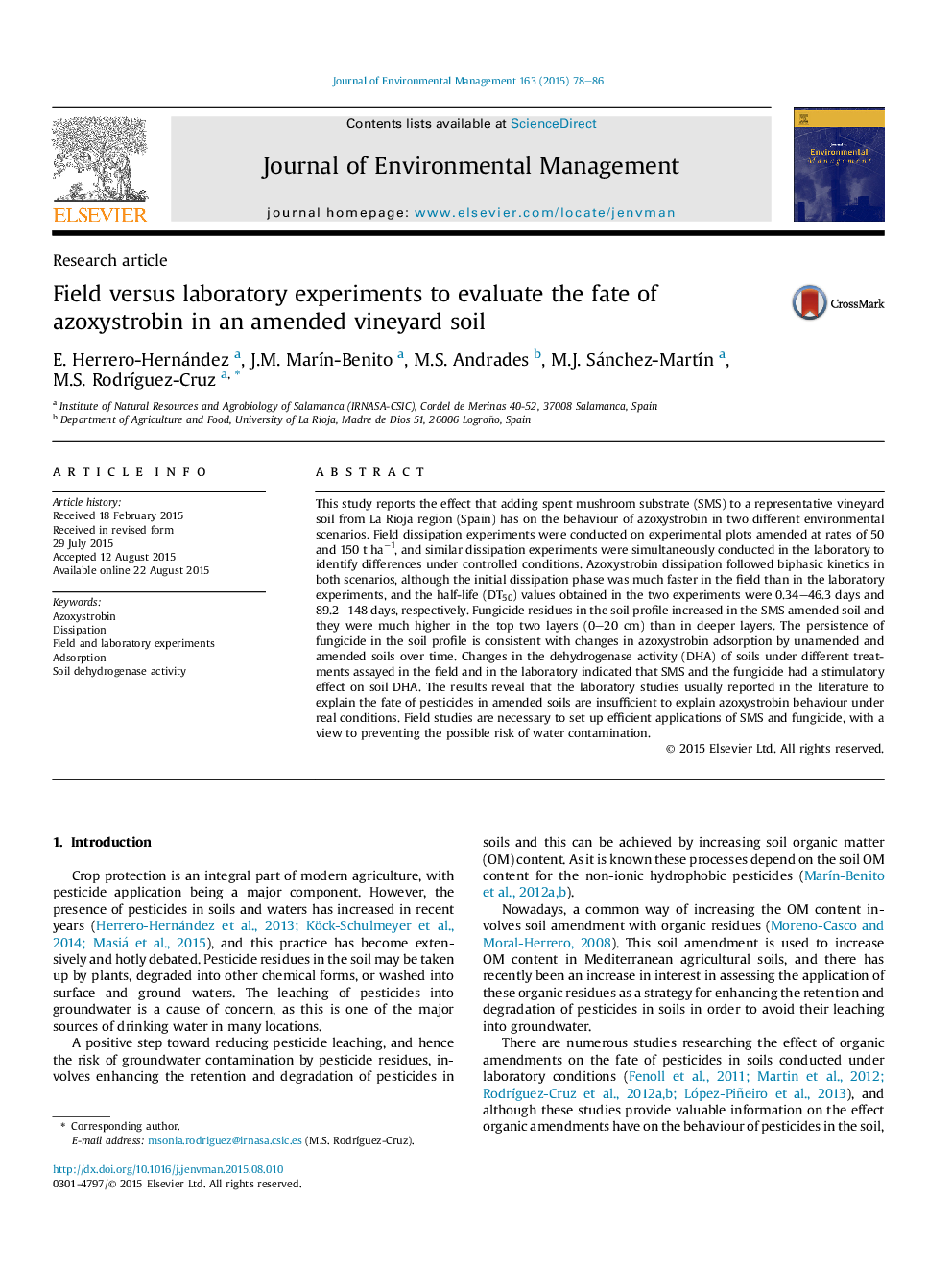| کد مقاله | کد نشریه | سال انتشار | مقاله انگلیسی | نسخه تمام متن |
|---|---|---|---|---|
| 1055515 | 1485249 | 2015 | 9 صفحه PDF | دانلود رایگان |
• Azoxystrobin dissipation was evaluated under field and laboratory conditions.
• Fungicide dissipation was faster in unamended soil than in SMS-amended soils.
• Initial dissipation was much faster in the field than in the laboratory experiments.
• Fungicide mobility through the soil profile was observed in all the treatments.
• Field studies are necessary to explain azoxystrobin behaviour under real conditions.
This study reports the effect that adding spent mushroom substrate (SMS) to a representative vineyard soil from La Rioja region (Spain) has on the behaviour of azoxystrobin in two different environmental scenarios. Field dissipation experiments were conducted on experimental plots amended at rates of 50 and 150 t ha−1, and similar dissipation experiments were simultaneously conducted in the laboratory to identify differences under controlled conditions. Azoxystrobin dissipation followed biphasic kinetics in both scenarios, although the initial dissipation phase was much faster in the field than in the laboratory experiments, and the half-life (DT50) values obtained in the two experiments were 0.34–46.3 days and 89.2–148 days, respectively. Fungicide residues in the soil profile increased in the SMS amended soil and they were much higher in the top two layers (0–20 cm) than in deeper layers. The persistence of fungicide in the soil profile is consistent with changes in azoxystrobin adsorption by unamended and amended soils over time. Changes in the dehydrogenase activity (DHA) of soils under different treatments assayed in the field and in the laboratory indicated that SMS and the fungicide had a stimulatory effect on soil DHA. The results reveal that the laboratory studies usually reported in the literature to explain the fate of pesticides in amended soils are insufficient to explain azoxystrobin behaviour under real conditions. Field studies are necessary to set up efficient applications of SMS and fungicide, with a view to preventing the possible risk of water contamination.
Figure optionsDownload as PowerPoint slide
Journal: Journal of Environmental Management - Volume 163, 1 November 2015, Pages 78–86
